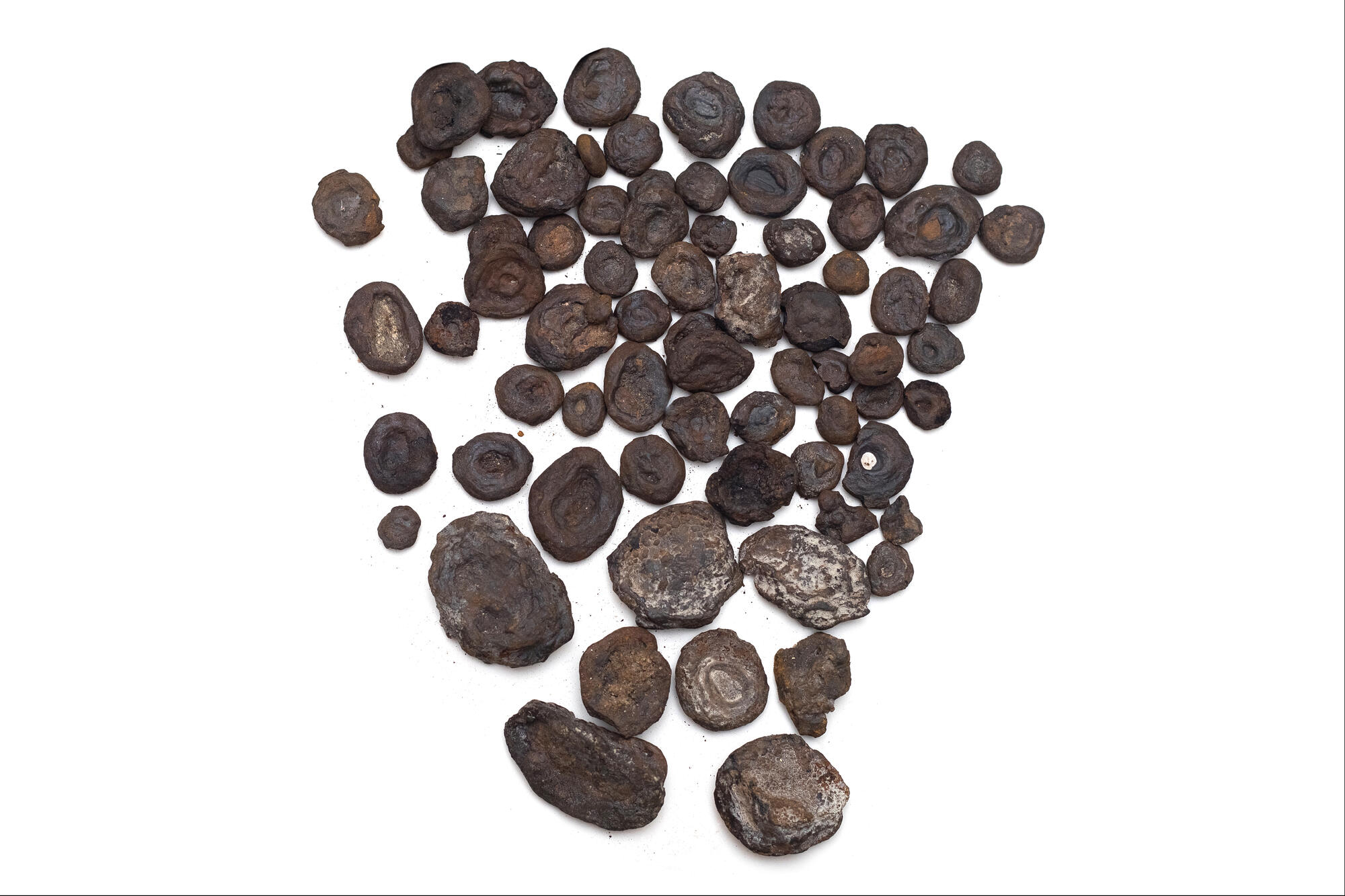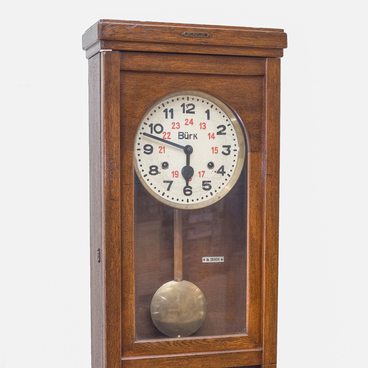Lake iron ore is a kind of brown iron ore lying at the bottom of the lakes in Olonets province. It has a form of pellets that are small spherical bodies ranging in size from a few millimeters to 5-10 centimeters, or flat circles, also known as “water coins”. This kind of ore contains 20–60% of ferrous oxide and various impurities.
Iron ore has been mined in Karelia from olden times. The beginning of iron ore industry in this region dates back to the 11th–12th centuries. Deposits of lake iron ore were collected from rafts with special dippers. To determine if there was any ore, people used birch bark. The birch was just put into water. If the outer layer rusted to a soft, smooth inner skin, people started so-called “fishing”.
Usually the ore occurred from 1 to 5 meters deep, and rarely it lies up to 10 meters deep. Lake iron ore is not found in deeper places.
Iron was melted down in homemade blast furnaces. Such metal was of high quality. At Tikhvin fairs, it cost more than iron from other parts of Russia. From the beginning of the Great Northern War, the demand for iron grew, since it was required to manufacture weapons. A special expedition was sent by Peter the Great to conduct ore searching in Karelia. In August 1703, he personally ordered to build the first plant with a blast furnace, the main enterprise of the Petrovsky plants, at the mouth of the Lososinka River on the shore of Lake Onega.
The northern part of Lake Onega borders on raised coastal ridges, created by volcanic rocks, containing up to 14% of iron. Deep underground waters are a natural reagent that washes iron oxides away from rocks and moves them to lakes. Those lakes, such as Munozero, Konchezero, Pergozero and Gabozero, become a kind of trap for ore pellets, especially elongated ones.
In 1946, significant ore deposits, that are about 2.8 billion years old, were found near Kostomuksha Lake. The ore-dressing and processing enterprise was built there in 1977. Nowadays, Kostomuksha ore-dressing and processing enterprise is one of the 20 largest enterprises in the field of ferrous metallurgy. It produces about 10 million tons of semi-finished iron goods per year.
Iron ore has been mined in Karelia from olden times. The beginning of iron ore industry in this region dates back to the 11th–12th centuries. Deposits of lake iron ore were collected from rafts with special dippers. To determine if there was any ore, people used birch bark. The birch was just put into water. If the outer layer rusted to a soft, smooth inner skin, people started so-called “fishing”.
Usually the ore occurred from 1 to 5 meters deep, and rarely it lies up to 10 meters deep. Lake iron ore is not found in deeper places.
Iron was melted down in homemade blast furnaces. Such metal was of high quality. At Tikhvin fairs, it cost more than iron from other parts of Russia. From the beginning of the Great Northern War, the demand for iron grew, since it was required to manufacture weapons. A special expedition was sent by Peter the Great to conduct ore searching in Karelia. In August 1703, he personally ordered to build the first plant with a blast furnace, the main enterprise of the Petrovsky plants, at the mouth of the Lososinka River on the shore of Lake Onega.
The northern part of Lake Onega borders on raised coastal ridges, created by volcanic rocks, containing up to 14% of iron. Deep underground waters are a natural reagent that washes iron oxides away from rocks and moves them to lakes. Those lakes, such as Munozero, Konchezero, Pergozero and Gabozero, become a kind of trap for ore pellets, especially elongated ones.
In 1946, significant ore deposits, that are about 2.8 billion years old, were found near Kostomuksha Lake. The ore-dressing and processing enterprise was built there in 1977. Nowadays, Kostomuksha ore-dressing and processing enterprise is one of the 20 largest enterprises in the field of ferrous metallurgy. It produces about 10 million tons of semi-finished iron goods per year.



